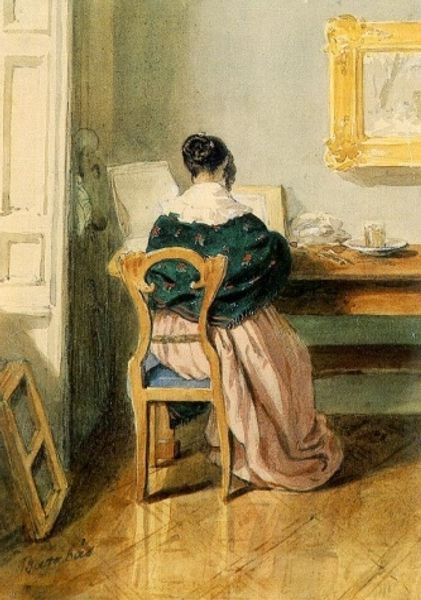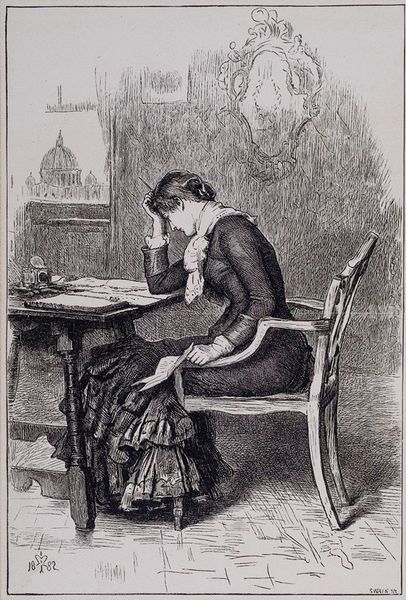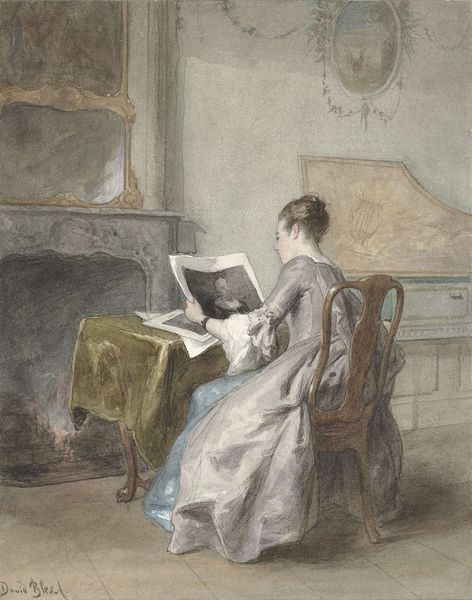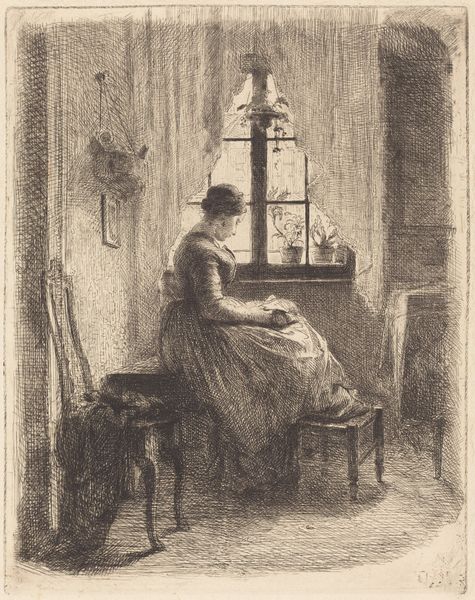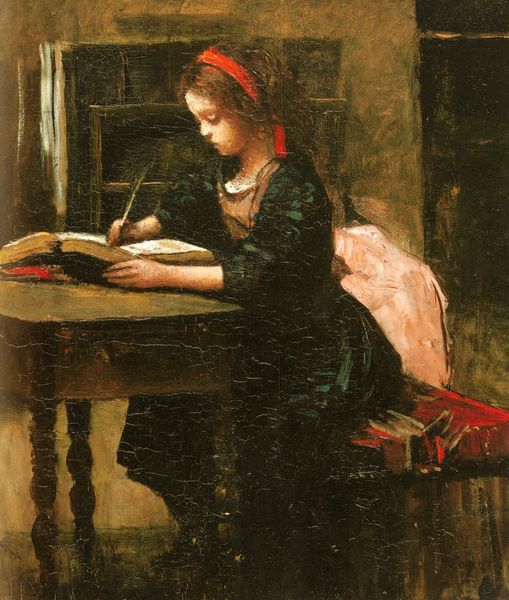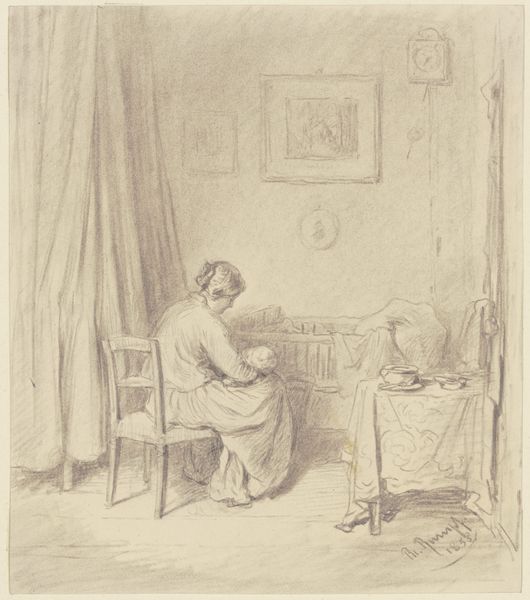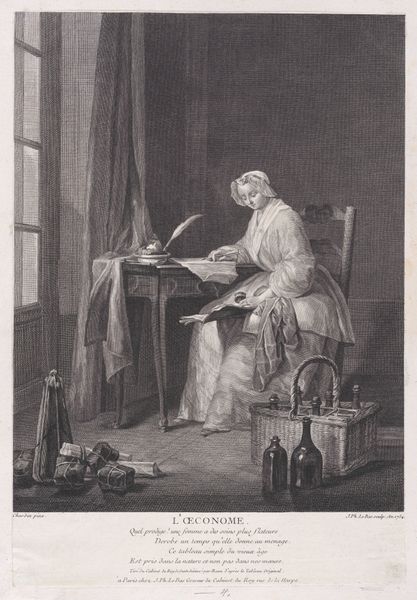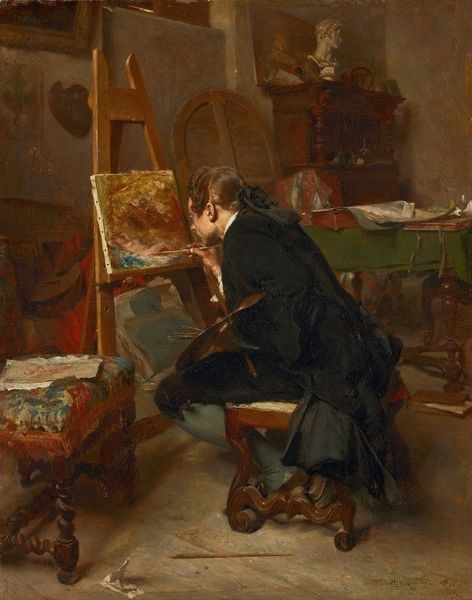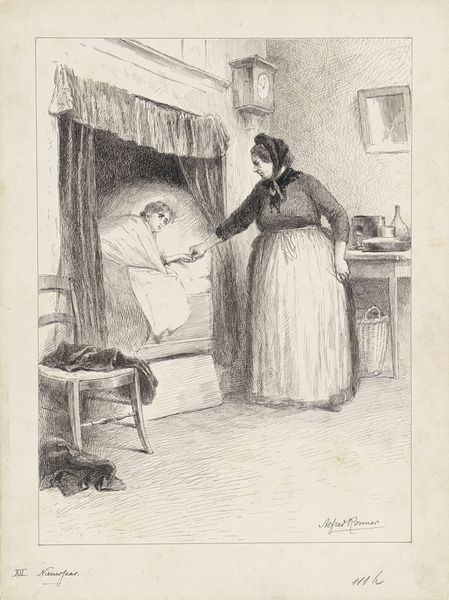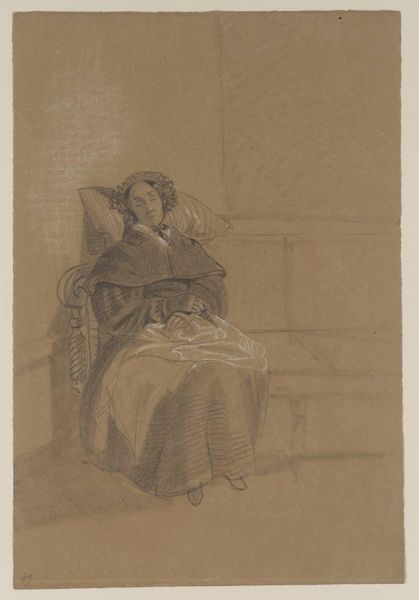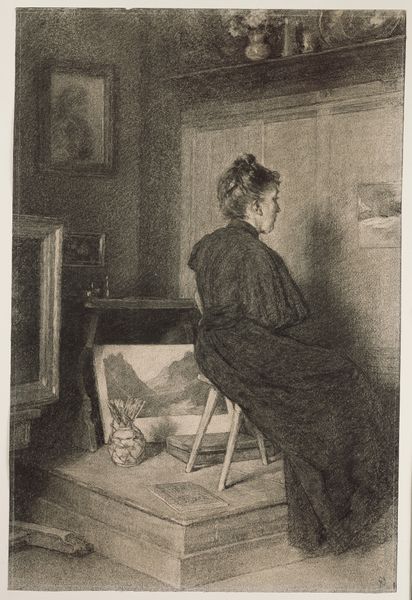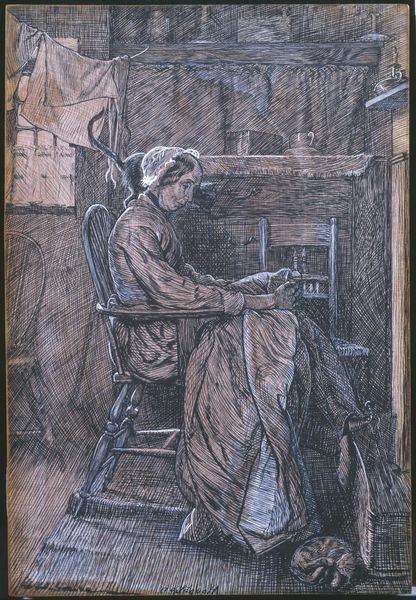
Copyright: Public Domain: Artvee
Editor: So, this drawing by Sir John Everett Millais, called "A Wife – Face in Both Hands She Knelt on the Carpet," created in 1863... it’s intensely melancholic, right? The figure, draped in blue, is just overwhelmed with something. What strikes you when you look at it? Curator: The overwhelming sense of grief is certainly potent. The color blue itself is heavy with centuries of symbolic weight. Think of the "Blue Madonna" iconographic tradition—it can signify purity, but here, combined with the woman’s posture, it becomes a symbol of profound sorrow. Editor: Sorrow, definitely. Is it the pose that suggests this depth of emotion? Curator: Partially, yes, and it comes from a very specific lineage. The gesture of covering one’s face speaks volumes, doesn't it? It echoes centuries of visual vocabulary depicting mourning – from classical sculptures of Niobe to countless religious depictions of lamentation. What does this repeated image tell us about collective experience? Editor: That sorrow is a timeless human experience? And that art gives shape to feelings we can't always articulate? Curator: Precisely. Millais taps into that shared visual language. And notice how he uses light – it doesn't offer solace but seems to highlight the bleakness. The open book offers no comfort; the bright landscape framed by the window contrasts, accentuating the internal turmoil. It’s about what we see *and* what those images awaken in us. Do you see any other details in the work? Editor: It seems simple, but there is complexity in it once it starts to get unpacked. I really appreciate how this piece is more than a drawing – it's a window into human emotion through symbolic history. Curator: Indeed, it shows how a single image can hold layers of cultural memory and enduring psychological resonance.
Comments
No comments
Be the first to comment and join the conversation on the ultimate creative platform.
